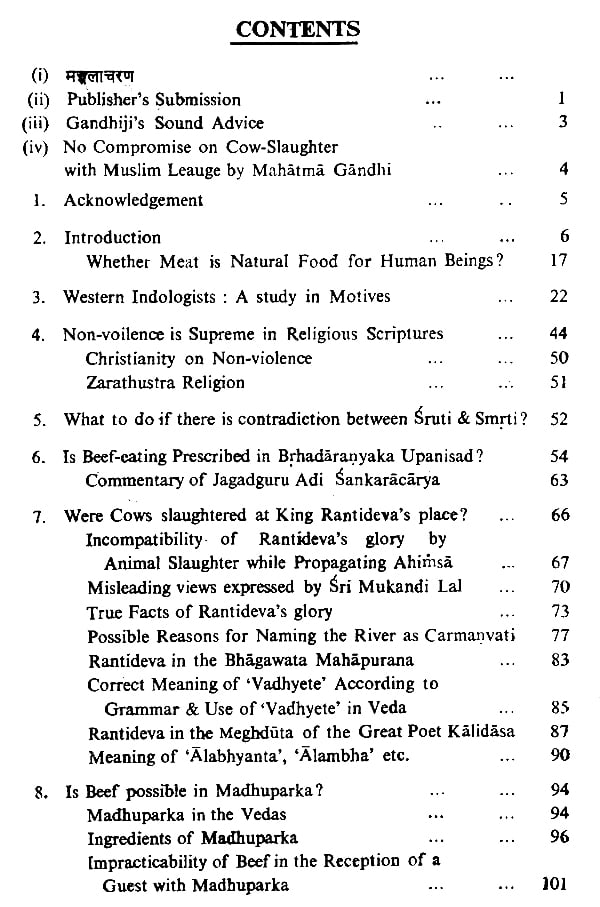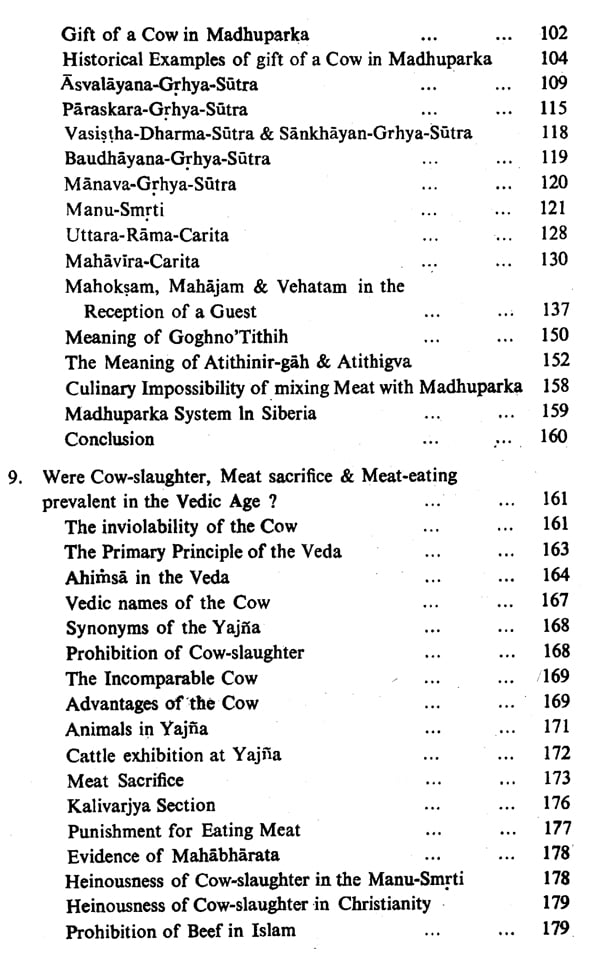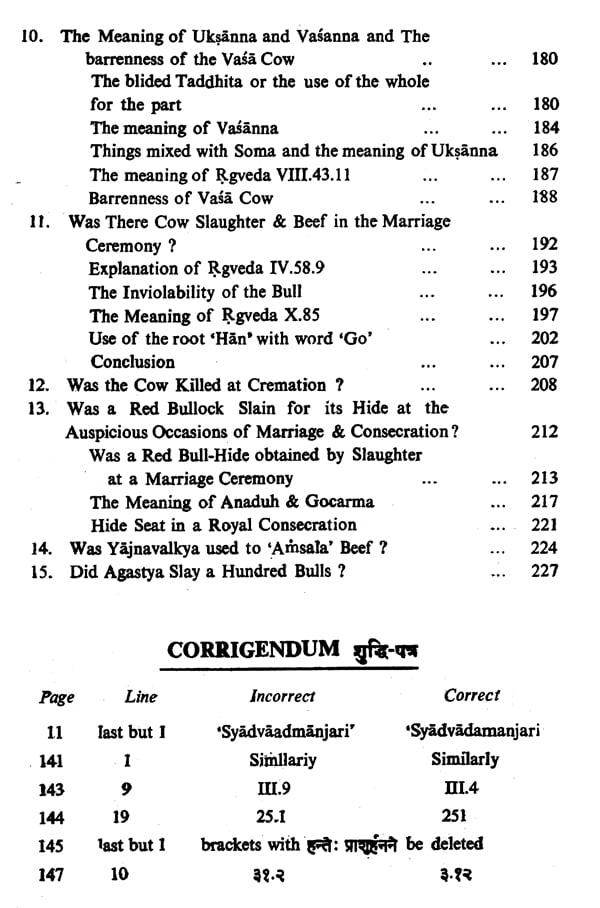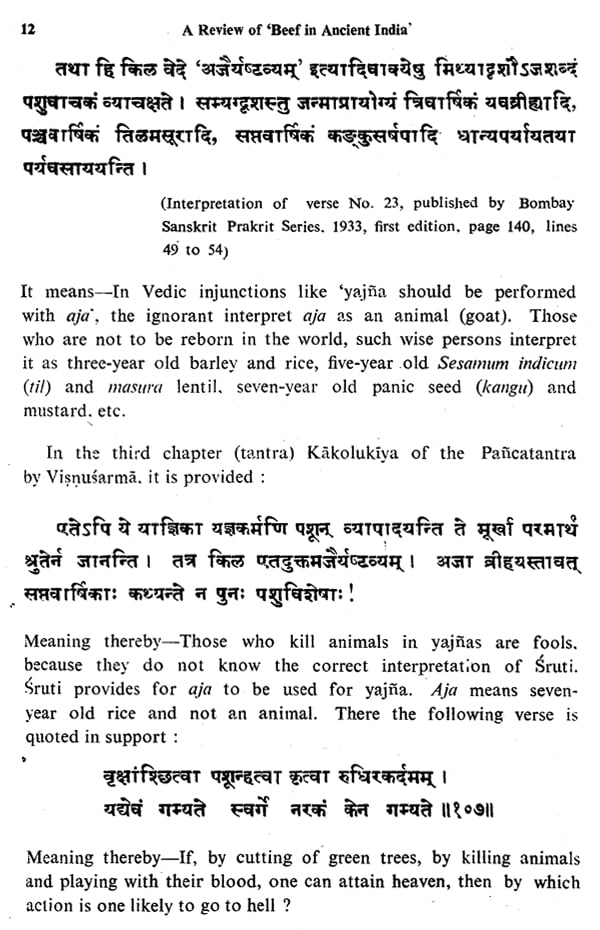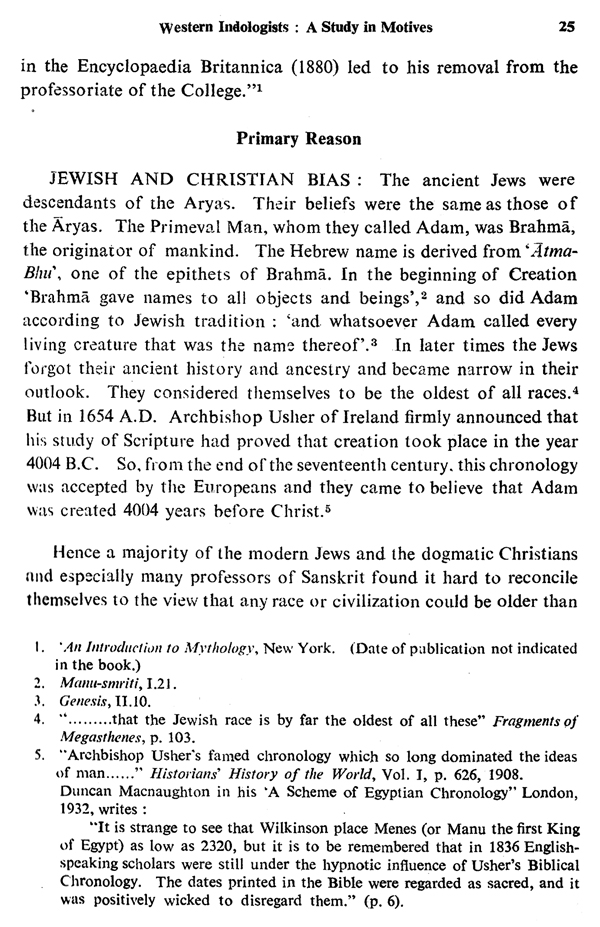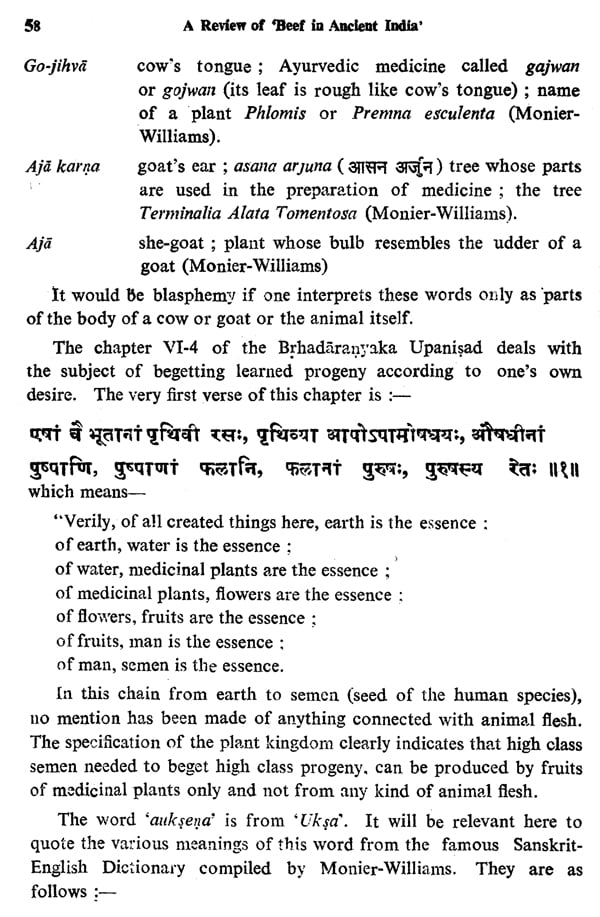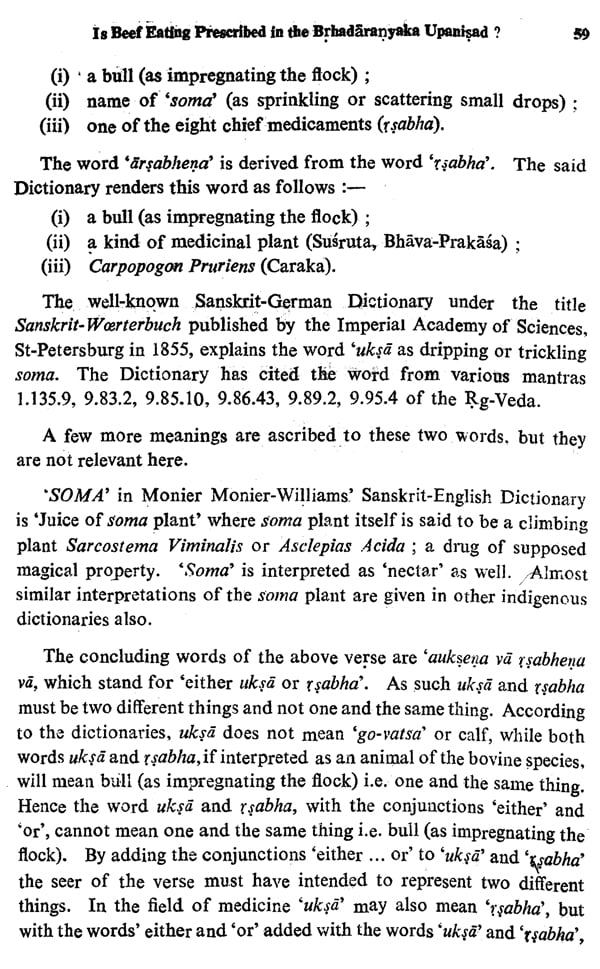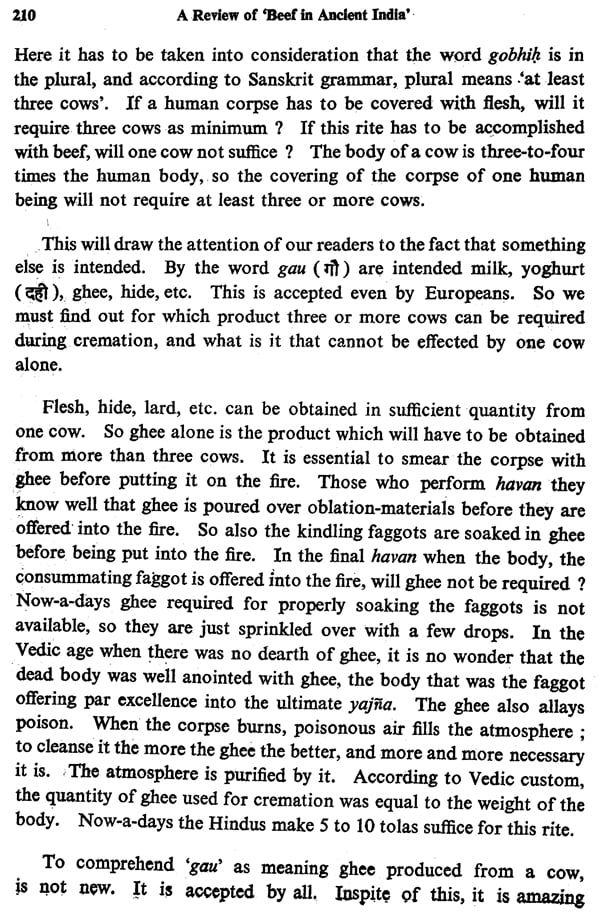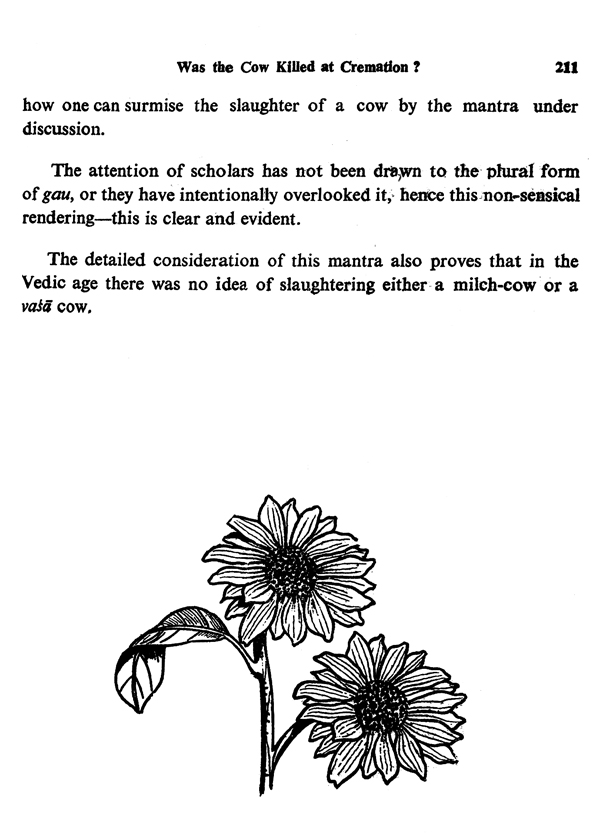
A Review of 'Beef in Ancient India'
Book Specification
| Item Code: | NAZ755 |
| Publisher: | Shri Haridas Shastri Goseva Sansthan |
| Language: | Sanskrit Text with English Translation |
| Edition: | 2009 |
| Pages: | 332 |
| Cover: | PAPERBACK |
| Other Details | 8.50 X 5.50 inch |
| Weight | 260 gm |
Book Description
Whenever the demand is made or an agitation takes place for the imposition of a ban on cow-slaughter, certain highly placed persons. out of ignorance or misunderstanding, publish articles in newspapers and magazines in which an effort is made to prove and establish that cow-slaughter was prevalent in Vedic India and beef was also taken. They give stray quotations in their articles from religious scriptures. Simple persons get confused on reading these articles. From time to time, scholars have clarified the position by correct interpretation of such quotations in Hindi, but these interpretations have not been available at one place, nor have they been published in those newspapers and/or magazines in which the misleading articles are published. Such clarifications have been collected and published in this book for the general benefit of all those who are interested in this questions and who would like to know the true position.
It has been seen that for the last 100 years foreigners as well as some scholars of our own country are trying to prove from the Scriptures of Santana Dharma that during the Vedic period not only ordinary meat, but beef was taken. Beef eating was not only customary, but it was an essential item. Let us consider the back-ground of such investigations and their propagation.
During the British period, when it was discovered that beef tallow was being applied in cartridges, mutiny broke out in the army during the year 1857. Since then, the Britishers were anxious to remove the feeling of reverence for the cow from the minds of the Hindus. With this object in view, they provided that European scholars become proficient in Sanskrit and ultimately misinterpret the Scriptures of Santana Dharma, and the mulls of these so called findings were propagated with ulterior motives. In support of this, please read the article entitled 'Western Indologist-A Study in Motives' appended to this book.
Our countrymen were also utilized to find out such instances from the Scriptures of Santana Dharma as would wipe out from the Hindu mind the feeling of reverence for the cow and also the feeling that it is unkillable. It appears that the first Indian victim to this stratagem was Raja Rajendra Lala Mitra. He was born in 1822. It is said that he belonged to a Vaishnava family of Bengal. His essay 'Beef in Ancient India' was first published in the year 1872, i.e. fifteen years after the mutiny, in the Journal of the Asiatic Society of Bengal. Raja Rajendra Lela Miter had to study a number of Vedic texts for preparing this essay and he has also commented on several of them. About four years after the publication of 'Beef in Ancient India', when no protest was made from any quarter, the Calcutta University conferred the degree of Doctor of Laws ILL. D.) on Raja Rajmdra Lola Mitra in the year1876. Raja Rajendra Lala Mitra's voluminous work was published in two volumes under the title 'Indo-Aryan' by W. Newman & Co., ' Calcutta, in 1881 and the article 'Beef in Ancient India' was incorporated as Chapter VI of its first volume.
This particular essay was published in the form of a booklet for the first time in the year 1926 from Calcutta by one Swami Bhoomanand. This was done just after Mahatma Gandhi had taken up the work of cow protection which is clear from his presidential address on 25th June 1925 at Belgaon at the Go-Raksha Parishad and his subsequent activities. In the Preface to the booklet, on pages i & ii from line 17th onwards, the publisher Swami Bhoomanand has written with great pride:
"In my long residence in the Punjab, and in my travels from Alwar to Peshawar, I came in contact with many educated Hindu gentlemen, but I was sorry to find that most of them did not study their own scriptures, and, being ignorant of the manners and customs of their ancestors, were necessarily very narrow in their outlook .... I myself do not pretend to be a Sanskrit scholar, bat my stadies of oar ancient books, and toady in English and Vern: odder translations, have opened my eyes to this fact that the Hindu society was not always just like the present one. For instance, we find in the Vedic literature, the ultimate authority and the fountain of knowledge, clear evidence of inter-caste marriages, widow marriage, elaborate yajnas, animal sacrifices, drinking of soma juice and the eating of food which is at present prohibited in the Hindu Society."
The above extract from the Preface of the booklet brings out clearly the purpose behind its publication and propagation. How the people, ignorant of Sanskrit, are misled by such misinterpreted articles would be clearly evident from the various articles published in this book.
Hereafter, the now protection movement gained momentum in 1967. A fresh reprint of the booklet `Beef in Ancient India' was published in June 1967 by Manisha Granthalaya Private Ltd., Calcutta. Several copies were distributed free. Whether they were distributed by the publishers or somebody else, could not be traced. After Raja Rajendra Lala Mitra came Shri Pandurang Vaman Cane, M.A., LLB., Advocate, Bombay High Court. He wrote 'History of Dharmasastra' in several volumes and parts, which has been published by the Bhandarkar Oriental Research Institute, Poona. He has also tried to justify meat and beef eating by quoting from several religious texts.
Book's Contents and Sample Pages
